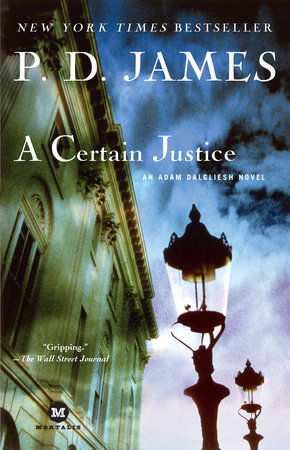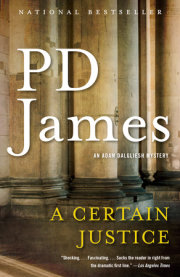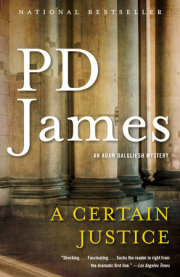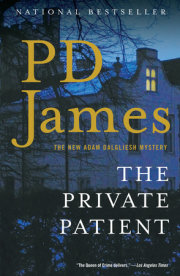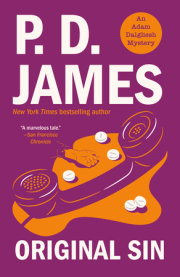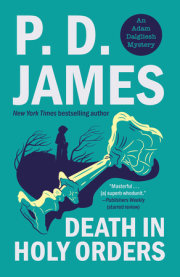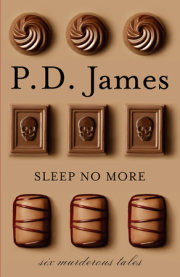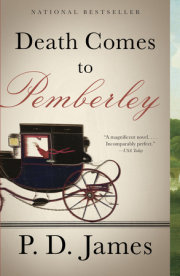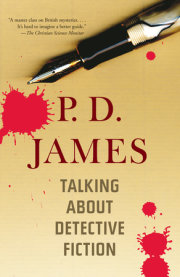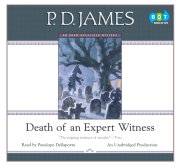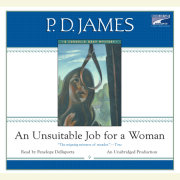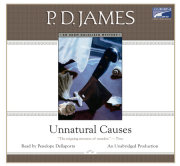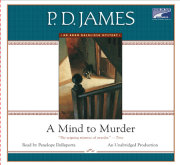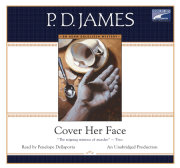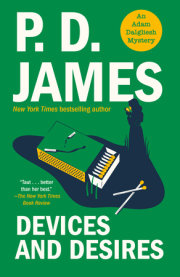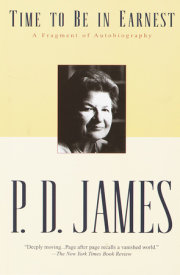Murderers do not usually give their victims notice. This is one death which, however terrible that last second of appalled realization, comes mercifully unburdened with anticipatory terror. When, on the afternoon of Wednesday, 11 September, Venetia Aldridge stood up to cross-examine the prosecution's chief witness in the case of Regina v. Ashe, she had four weeks, four hours and fifty minutes left of life. After her death the many who had admired her and the few who had liked her, searching for a more personal response than the stock adjectives of horror and outrage, found themselves muttering that it would have pleased Venetia that her last case of murder had been tried at the Bailey, scene of her greatest triumphs, and in her favourite court.
But there was truth in the inanity.
Court Number One had laid its spell on her since she had first entered it as a pupil. She had always tried to discipline that part of her mind which she suspected could be seduced by tradition or history, yet she responded to this elegant wood-panelled theatre with an aesthetic satisfaction and a lifting of the spirit which was one of the keenest pleasures of her professional life. There was a rightness about the size and proportions, an appropriate dignity in the richly carved coat of arms above the dais, and the glittering seventeenth-century Sword of Justice suspended beneath it, an intriguing contrast between the witness box, canopied like a miniature pulpit, and the wide dock, in which the accused sat level-eyed with the judge. Like all places perfectly designed for their purpose with nothing wanting, nothing superfluous, it induced a sense of timeless calm, even the illusion that the passions of men were susceptible to order and control. Once from curiosity she had gone into the public gallery and had sat for a minute looking down at the empty court and it had seemed to her that only here, where the spectators sat close-packed, was the air knotted with decades of human terror, hope and despair. And now she was once more in the place where she belonged. She hadn't expected the case to be heard in the Old Bailey's most famous court or to be judged by a High Court Judge, but a previous trial had collapsed and the judge's sittings and court allocation had been reorganized. It was a happy omen. She had lost in Court One, but the memories of defeats there were not bitter. More often she had won.
Today, as always in court, she reserved her gaze for the judge, the jury, the witnesses. She seldom conferred with her junior, spoke to Ashe's solicitor seated in front of her or kept the court waiting even momentarily while she searched in her papers for a note. No defending counsel went into court better prepared. And she rarely glanced at her client, and then, when possible, without too obviously turning her head towards the dock. But his silent presence dominated her mind as she knew it did the court. Garry Ashe, aged twenty-one years and three months, accused of murdering his aunt, Mrs. Rita O'Keefe, by cutting her throat. One clean single slash, severing the vessels. And then the repeated frenzied stabs at the half-naked body. Often, particularly with a murder of great brutality, the accused seemed almost pathetically inadequate in his ordinariness, his air of hapless incompetence at variance with the violent dedication of the deed. But there was nothing ordinary about this accused. It seemed to Venetia that, without turning, she could remember every detail of his face.
He was dark, the eyes sombre under straight thick brows, the nose sharp and narrow, the mouth wide but thin-lipped, unyielding. The neck was long and very slender, giving the head the hieratic appearance of a bird of prey. He never fidgeted, indeed seldom moved, sitting very upright in the centre of the dock, flanked by the attendant officers. He seldom glanced at the jury in their box to his left. Only once, during the prosecution counsel's opening speech, had she seen him look up at the public gallery, his gaze ranging along the rows with a slight frown of disgust, as if deploring the quality of the audience he had attracted, before turning his eyes again to rest them on the judge. But there was nothing tautly anxious about his stillness. Instead he gave the impression of a man accustomed to public exposure, a young princeling at a public entertainment, to be endured rather than enjoyed, attended by his lords. It was the jury, the usual miscellany of men and women assembled to judge him, who looked to Venetia like an oddly assorted group of miscreants herded into the box for sentence. Four of them, in open-necked shirts and jumpers, looked as if they were about to wash the car. In contrast, the accused was carefully dressed in a navy-blue striped suit with a shirt so dazzling that it looked like an advertisement for a washing powder. The suit was well pressed but poorly cut, the over-padded shoulders giving the vigorous young body some of the gangling tenuity of adolescence. It was a good choice, the suit hinting at a mixture of self-respect and vulnerability which she was hoping to exploit.
She had a respect, but no liking, for Rufus Matthews, who was prosecuting. The days of flamboyant eloquence in court were over and had in any case never been appropriate to the prosecution, but Rufus liked to win. He would make her fight for every point gained. Opening the prosecution case, he had recounted the facts with a brevity and an unemphatic clarity which left the impression that no eloquence was necessary to support a case so self-evidently true.
Garry Ashe had lived with his maternal aunt, Mrs. Rita O'Keefe, at 397 Westway for a year and eight months before her death. His childhood had been spent in care, during which he had been placed with eight foster parents between periods in children's homes. He had lived in two London squats and had worked for a time in a bar in Ibiza before moving in with his aunt. The relationship between aunt and nephew could hardly be called normal. Mrs. O'Keefe was in the habit of entertaining a variety of men friends, and Garry was either compelled, or consented, to photograph his aunt and these various men engaged in the sexual act. Photographs which the accused had admitted taking would be shown in evidence.
On the night of the murder, Friday, 12 January, Mrs. O'Keefe and Garry were seen together from six o'clock to nine in the Duke of Clarence public house in Cosgrove Gardens, about one and a half miles from Westway. There was a quarrel and Garry left shortly after nine, saying that he was going home. His aunt, who was drinking heavily, stayed on. At about ten-thirty the licensee refused to serve her any more and she was helped into a taxi by two of her friends. At that time she was drunk but by no means incapable. Her friends judged that she was able to get home on her own. The cab-driver deposited her at Number 397 and watched her enter through the side gate at about ten-forty-five.
At ten minutes past midnight a call was made to the police by Garry Ashe from his aunt's house to say that he had returned from a walk to discover her body. When the police arrived at twelve-twenty they found Mrs. O'Keefe lying on a single divan in the front sitting-room, practically naked. Her throat had been cut and she had been slashed with a knife after death, a total of nine wounds. It was the opinion of the forensic pathologist who saw the body at twelve-forty that Mrs. O'Keefe had died very shortly after her return home. There was no evidence of a break-in, and nothing to suggest that she had been entertaining or expecting a visitor that night.
A smear of blood, later identified as Mrs. O'Keefe's, had been found on the headpiece of the shower above the bath in the bathroom, and two spots of her blood on the stair carpet. A large kitchen knife had been discovered under the privet hedge of a front garden less than a hundred yards from 397 Westway. The knife, which had a distinctive triangular chip in the handle, had been identified both by the accused and by the cleaning woman as having come from the drawer in Mrs. O'Keefe's kitchen. It had been cleaned of all fingerprints.
The defendant had told the police that he had not gone straight home from the public house, but had walked the streets behind Westway and down as far as Shepherd's Bush before returning after midnight to discover his aunt's body. The court would, however, hear evidence from the neighbour living next door that she had seen Garry Ashe leaving 397 Westway at eleven-fifteen on the night of the murder. It was the case for the Crown that Garry Ashe had, in fact, gone straight home from the Duke of Clarence public house, that he had waited for his aunt to return and that he had killed her with the kitchen knife, probably himself in a state of nakedness. He had then taken a shower, dressed and left the house at eleven-fifteen to walk the streets in an attempt to establish an alibi.
Rufus Matthews's final words were almost perfunctory. If the jury were satisfied on the evidence put before them that Garry Ashe had murdered his aunt, it would be their duty to return a verdict of guilty. If, however, at the end of the case they were left with a reasonable doubt of his guilt, then the accused was entitled to be acquitted of the murder of Mrs. Rita O'Keefe.
. All rights reserved. No part of this excerpt may be reproduced or reprinted without permission in writing from the publisher.

